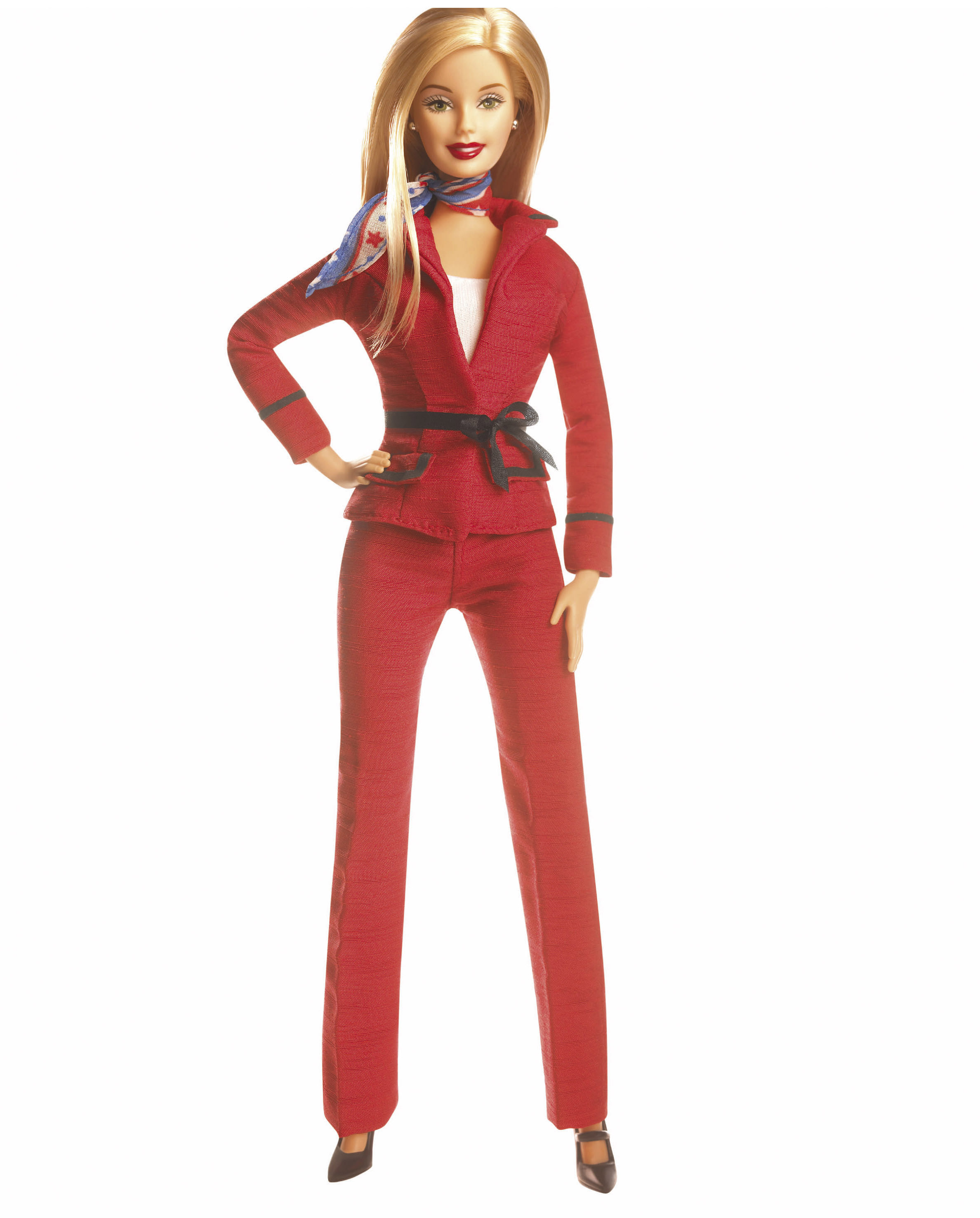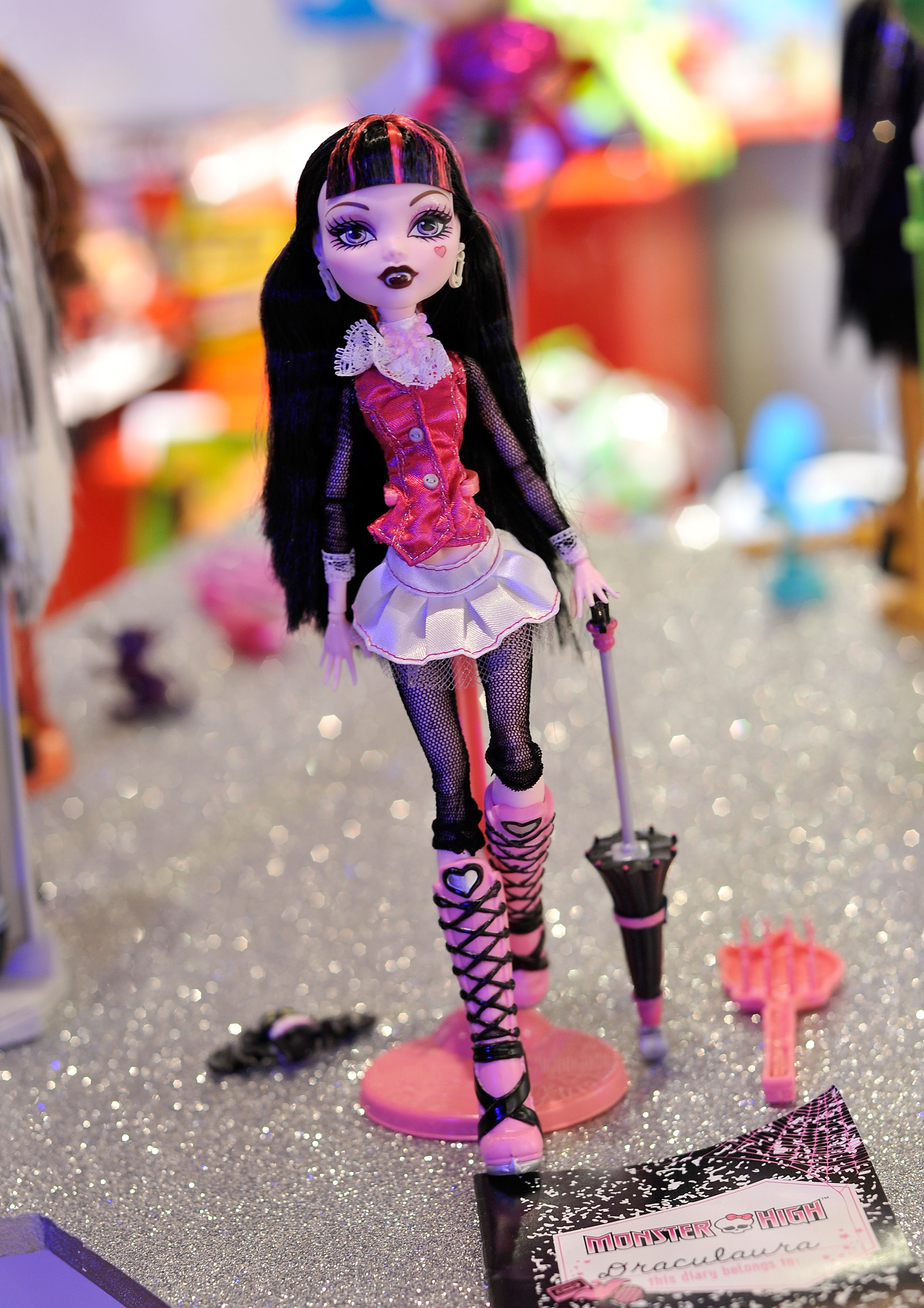
It may be time for Barbie to get a whole new wardrobe and some fun new accessories: Aging Jilted Barbie, complete with stained bathrobe, bottle of red wine and copy of Eat, Pray, Love.
That’s because Barbie is being pushed out in favor of younger, sluttier dolls with bigger heads. First it was Bratz with their outrageously puffed up lips, heavy makeup and feather boas, now it’s Monster High dolls, who dress like prostitutes and have the dimensions of lollipops. Sales for Barbie were down 13% over the holiday quarter, the steepest drop in recent memory. This time last year, sales had only dropped 4%.
Barbie has always gotten flak for her too thin, too made-up look; she’s basically an effigy for everything feminists hate. But at least Barbie looks like an adult woman, which is more than can be said for the Monster High dolls. They have enormous heads and spaghetti legs attached to a prepubescent body clad in fishnets and dominatrix boots. Barbie might be too thin for some people’s taste, but she doesn’t look like a baby hooker. I’d take an out-of-whack body image over sexualizing kids any day of the week.

It’s hard not to feel sorry for her. Ruthlessly attacked, snatched out of the hands of doting 6-year-olds by politically correct parents and usurped by fishnet-clad hussies with none of her dignity and professionalism, Barbie dutifully keeps paying the insurance on her Barbie Glam Convertible and the mortgage on her Malibu Dreamhouse. She picks up after the dog, the pony and the unicorn, every goddamn time. It’s a struggle for her to get out of bed every day, because if she were a real woman, she would have the BMI of a severe anorexic (at 5 ft. 9 in. and 110 lb.) and would have difficulty standing up on those tiny feet.
But now Barbie’s makers have decided to fight back and turn the conversation about her absurd proportions around. Last month, they launched a new campaign called #Unapologetic to push back at some of the haters. “In essence, Barbie is always asked to apologize for what she looks like,” Mattel spokeswoman Michelle Chidoni tells me. “And the message there is to be unapologetic.” The new ads that include a Times Square billboard and lots of social media (“Be YOU. Be Bold. Be #Unapologetic”) are clearly intended to beat body-image critics at their own game. Yes, Barbie is aiming to be the poster doll for female empowerment.
And that’s not as strange as it sounds. Barbie has worked every second of every day since she was invented in 1959, and she’s broken more glass ceilings than Sheryl Sandberg. Sure, she started off as a teen fashion model, but quickly worked her way up to fashion editor, then decided “what the hell” and went back to get her doctorate in astrophysics so that she could be an astronaut by 1965. In the 1970s she performed surgeries and won the 1975 Olympics (where she dominated every event, since no other athletes competed that year). And in the ’90s she ran for President, performed with the Rockettes and played for Dallas in the WNBA.
Like a lot of successful women, she finds that no matter how much she achieves people won’t stop talking about her looks. She’s also dogged by the criticism that her too perfect figure creates unrealistic body standards for girls. Last year, artist Nickolay Lamm made waves by creating “Normal Barbie,” a doll with the dimensions of the average 19-year-old, just to show the contrast. Barbie’s also been one of the main scapegoats of the movement against gendered toys in the “pink aisle,” with parents and kids agitating for more active toys for girls that aren’t all about fashion and beauty. Even conservatives use her name as a slur; Erick Erickson of RedState called Texas state senator Wendy Davis “Abortion Barbie” after her 11-hour filibuster of an antiabortion bill.
There is research to show that Barbie’s inhuman dimensions do affect girls’ body image, but it seems simplistic to blame Barbie alone for something as complicated as the way girls think about their weight. For one thing, other research shows that young girls’ body image is more influenced by their mothers’ attitudes than anything else. So anyone who thinks banning Barbie dolls is going to suddenly result in healthy self-esteem is seriously delusional.
The great irony of the Barbie debate is that we spend so much time talking about how she looks and so little time talking about her careers — all 150 of them. She represents beauty and materialism, sure, but she also represents mutability, imagination and professional possibilities. If we took her work life half as seriously as we took her waist measurement, we could use Barbie as a way to talk to girls about the jobs they want, not the bodies they want. Barbie knows how to ask for a promotion, you can give her that.
GoldieBlox engineering toys for girls are a great alternative to the pink aisle, but there will always be some girls who just like dolls. And while most of those dolls have the same itsy-bitsy waists and freaky legs, none of them have Barbie’s résumé. Let’s not discard her just yet. Instead, let’s get her a scrunchie and a BlackBerry and get her back in the game.
More Must-Reads from TIME
- Why Trump’s Message Worked on Latino Men
- What Trump’s Win Could Mean for Housing
- The 100 Must-Read Books of 2024
- Sleep Doctors Share the 1 Tip That’s Changed Their Lives
- Column: Let’s Bring Back Romance
- What It’s Like to Have Long COVID As a Kid
- FX’s Say Nothing Is the Must-Watch Political Thriller of 2024
- Merle Bombardieri Is Helping People Make the Baby Decision
Write to Charlotte Alter at charlotte.alter@time.com